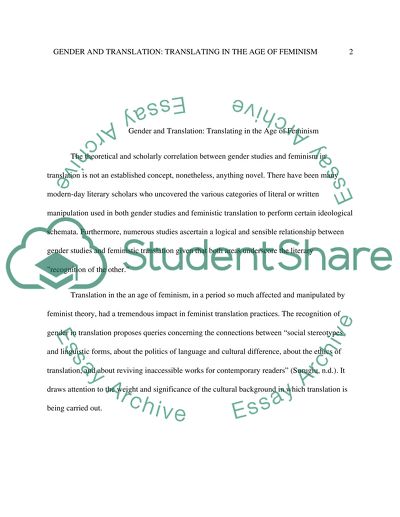Cite this document
(“Gender and Translation: Translating in the Age of Feminism Term Paper”, n.d.)
Gender and Translation: Translating in the Age of Feminism Term Paper. Retrieved from https://studentshare.org/psychology/1403539-translation-and-feminism-with-a-case-study
Gender and Translation: Translating in the Age of Feminism Term Paper. Retrieved from https://studentshare.org/psychology/1403539-translation-and-feminism-with-a-case-study
(Gender and Translation: Translating in the Age of Feminism Term Paper)
Gender and Translation: Translating in the Age of Feminism Term Paper. https://studentshare.org/psychology/1403539-translation-and-feminism-with-a-case-study.
Gender and Translation: Translating in the Age of Feminism Term Paper. https://studentshare.org/psychology/1403539-translation-and-feminism-with-a-case-study.
“Gender and Translation: Translating in the Age of Feminism Term Paper”, n.d. https://studentshare.org/psychology/1403539-translation-and-feminism-with-a-case-study.


